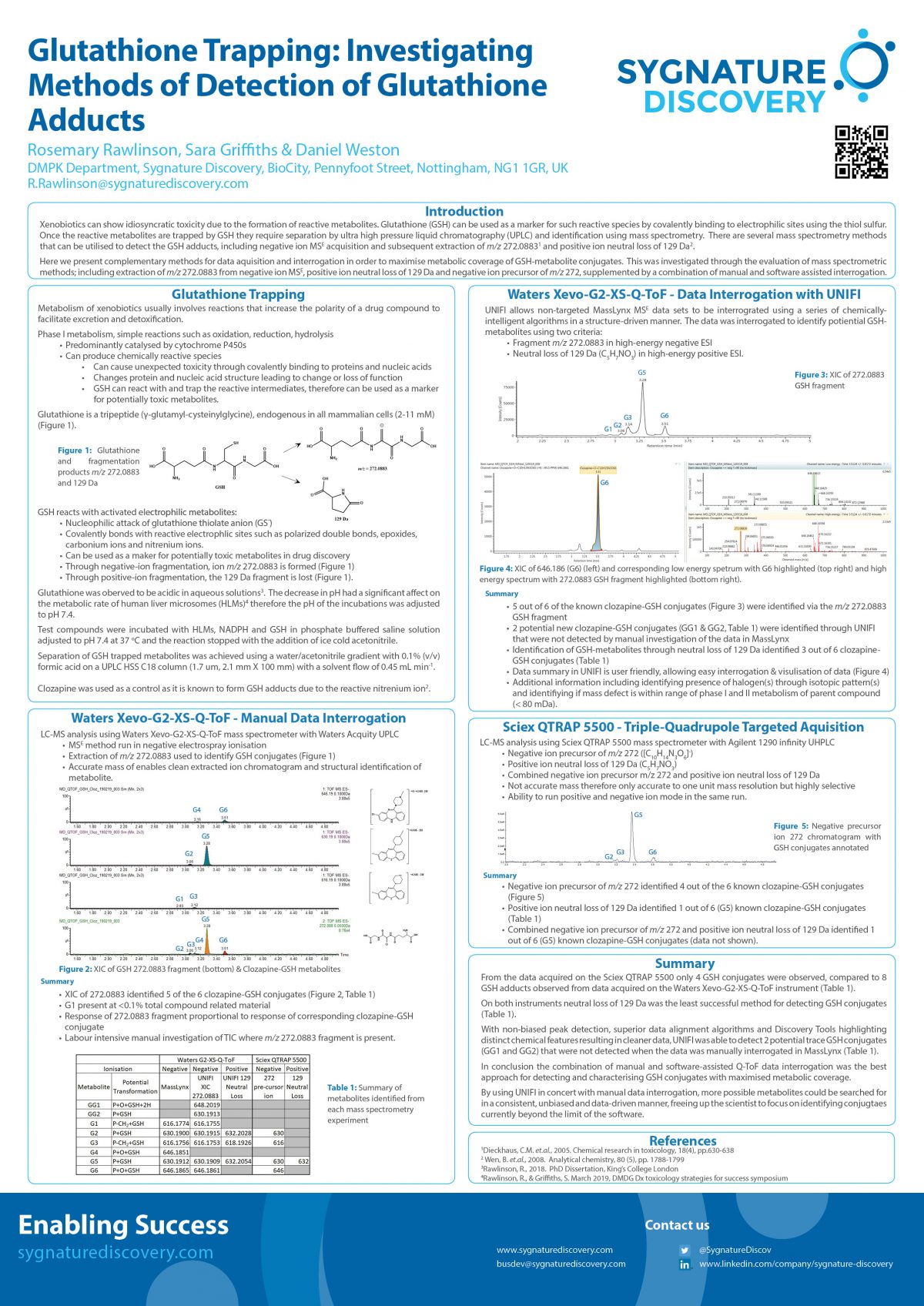Glutathione Trapping: Investigating Methods of Detection of Glutathione Adducts
Identifying reactive metabolites early is essential for mitigating compound-related toxicity risks during drug discovery. Glutathione (GSH) trapping assays are widely used to detect the formation of these intermediates. Glutathione (GSH) trapping assays are widely used to detect the formation of these reactive intermediates. But with multiple analytical techniques avalailable, which one offers the best balance of sensitivity, specificity and practicality?
In this poster, Sygnature Discovery compares LC-UV, LC-FLR and LC-MS methods for their ability to detect GSH adducts formed during in vitro metabolism studies. The findings help DMPK scientists optimize workflows for early screening and reactive metabolite detection.
Xenobiotics and Reactive Metabolic Screening
Xenobiotics can show idiosyncratic toxicity due to the formation of reactive metabolites. Glutathione (GSH) can be used as a marker for such reactive species by covalently binding to electrophilic sites using the thiol sulfur.
Once the reactive metabolites are trapped by GSH they require separation by ultra high pressure liquid chromatography (UPLC) and identification using mass spectrometry. There are several mass spectrometry methods that can be utilised to detect the GSH adducts, including:
- negative ion MSE acquisition and subsequent extraction of m/z 272.08833
- positive ion neutral loss scanning of 129 Da
- negative ion precursor scanning for m/z 272
negative ion MSE acquisition and subsequent extraction of m/z 272.0883 and positive ion neutral loss of 129 Da.
In this study, we present complementary methods for data acquisition and interrogation to maximise metabolic coverage of GSH adducts. These include both manual review and software-assisted interrogation across a range of MS strategies.
Supporting Your Research
Our method development and validation team continuously enhances analytical workflows to support lead optimization and derisk drug candidates. Whether you’re in early discovery or progressing toward IND-enabling studies, Sygnature can help make more informed decisions around compound safety.
Have a project that could benefit from expert glutathione adduct analysis or mass spectrometry method development?

